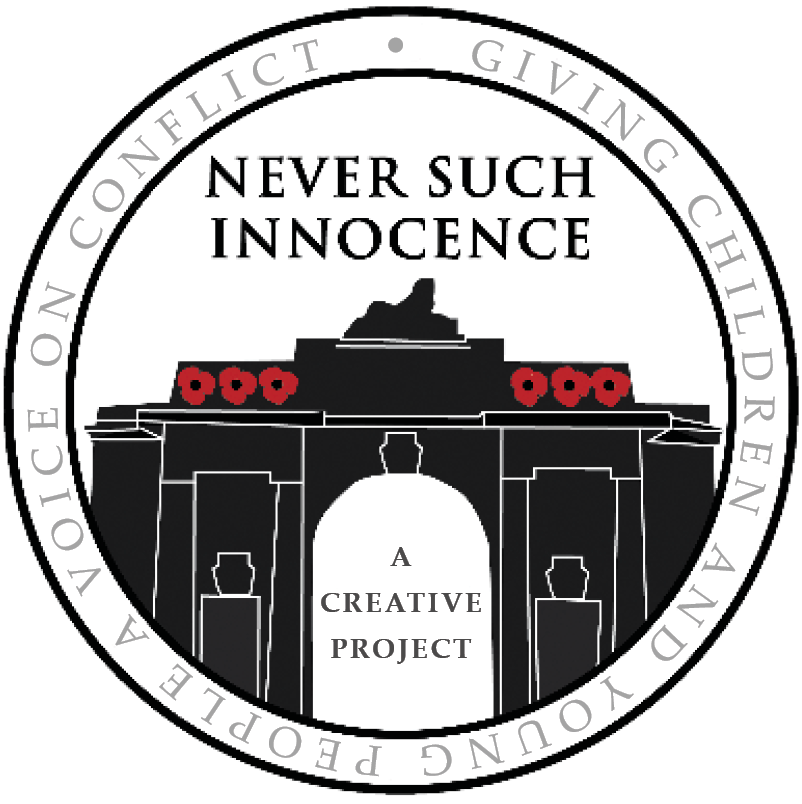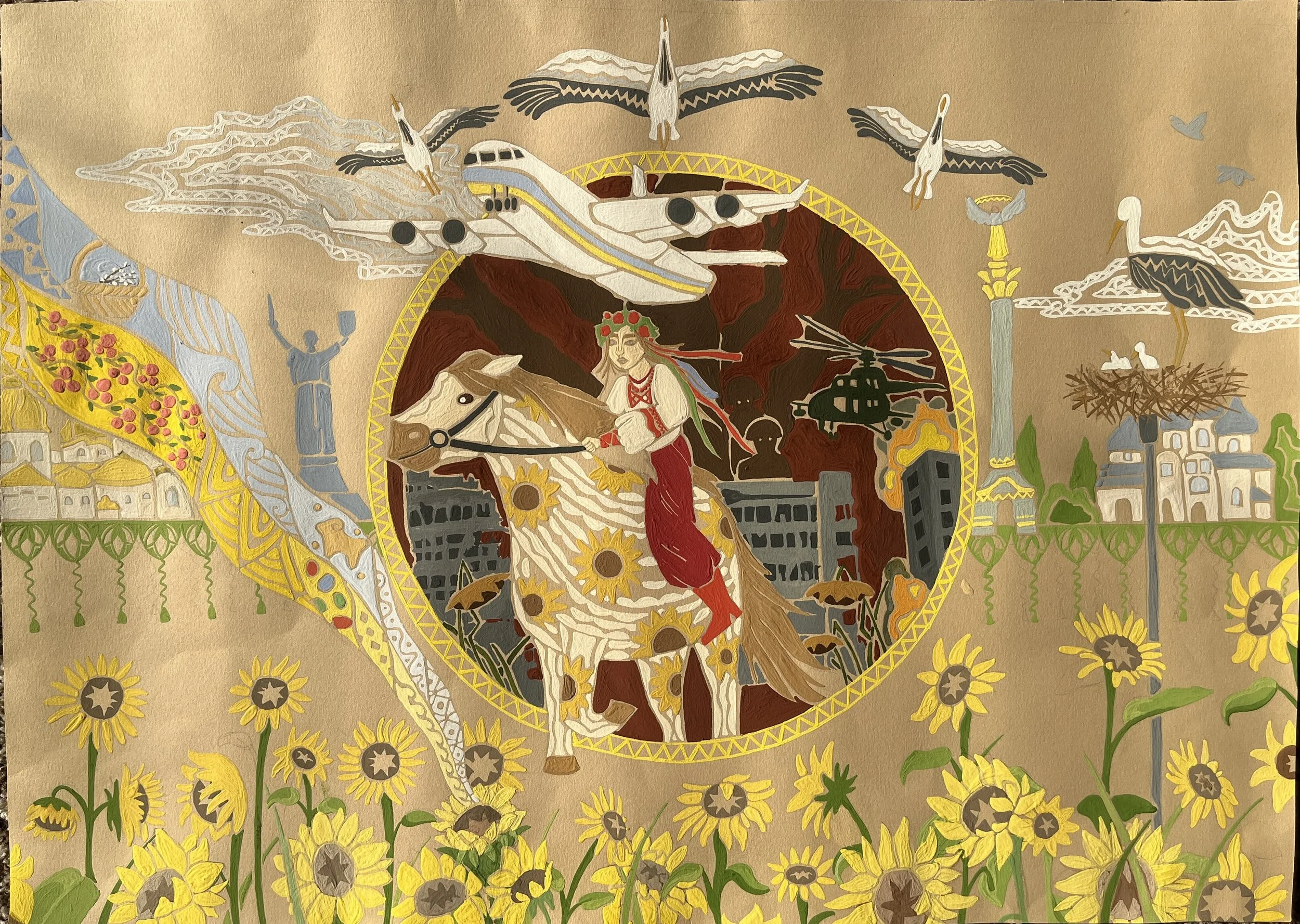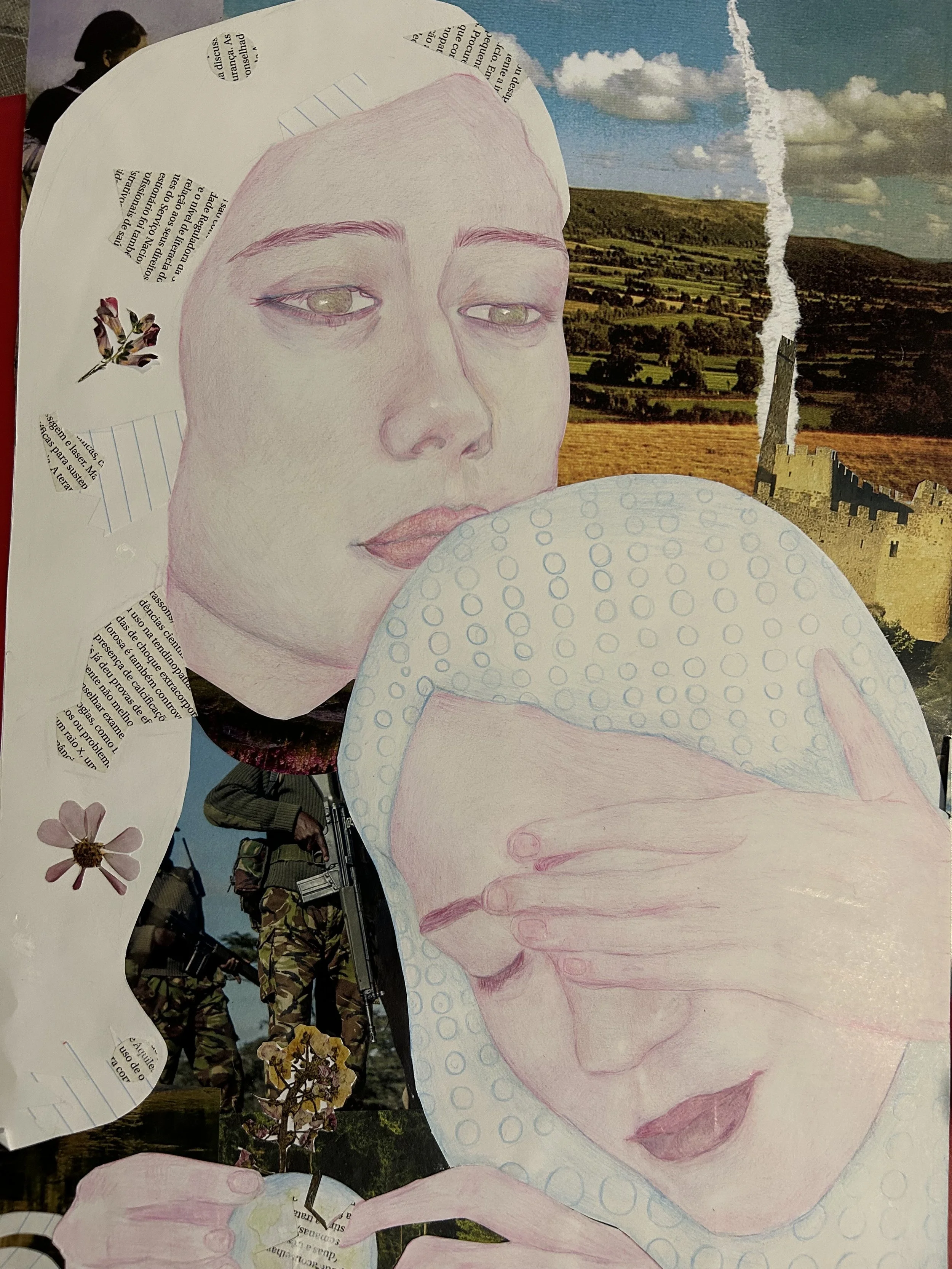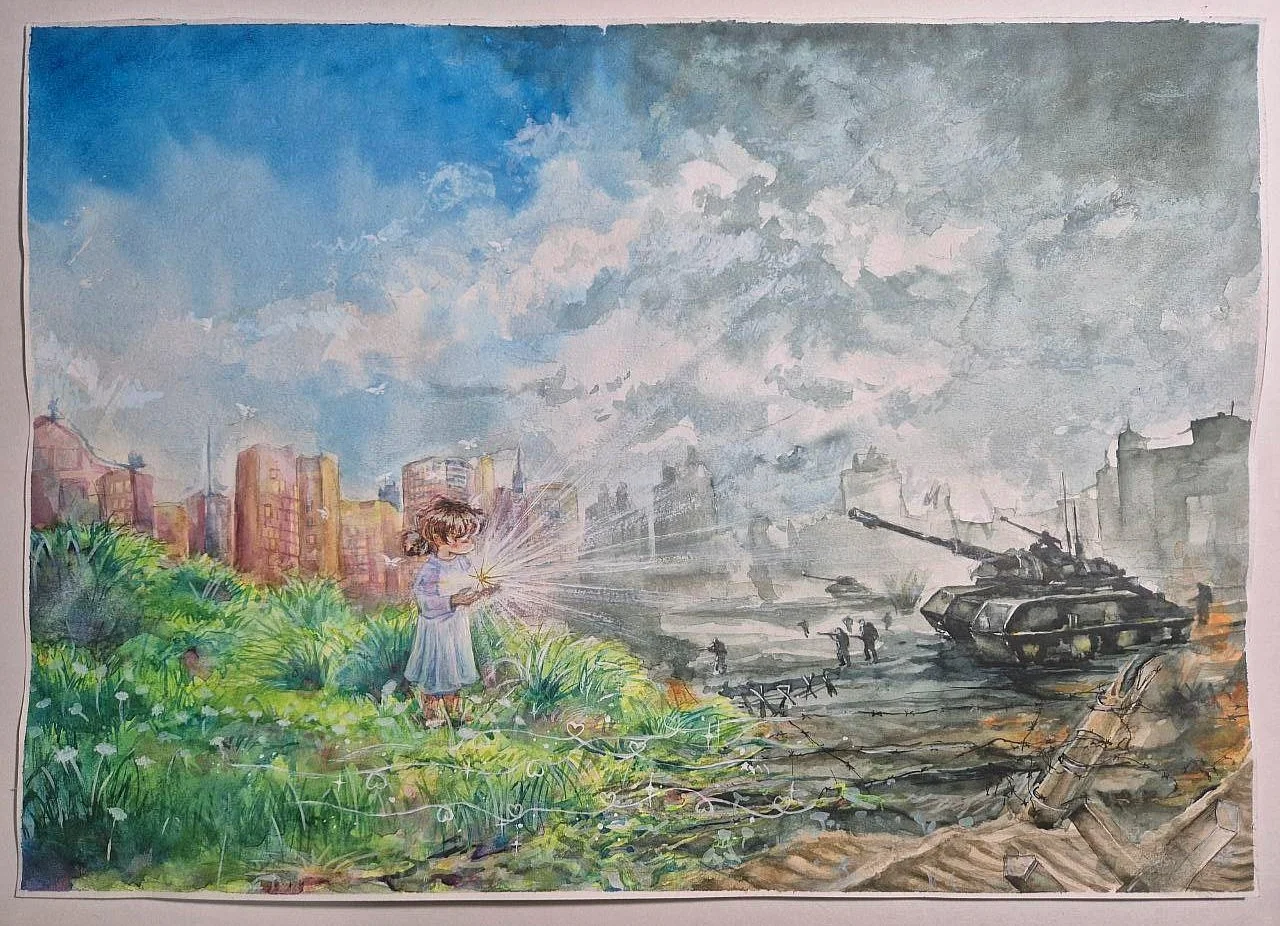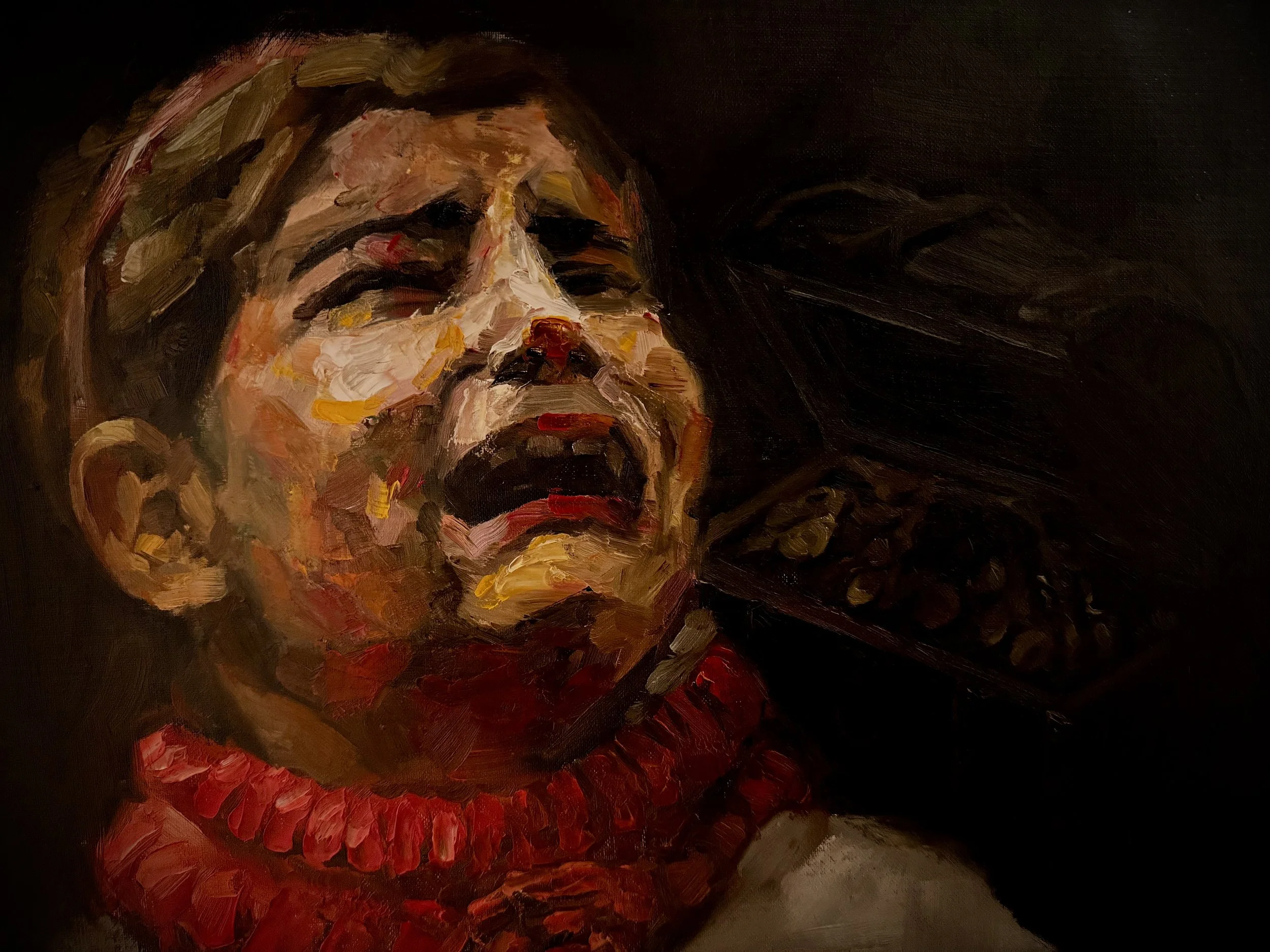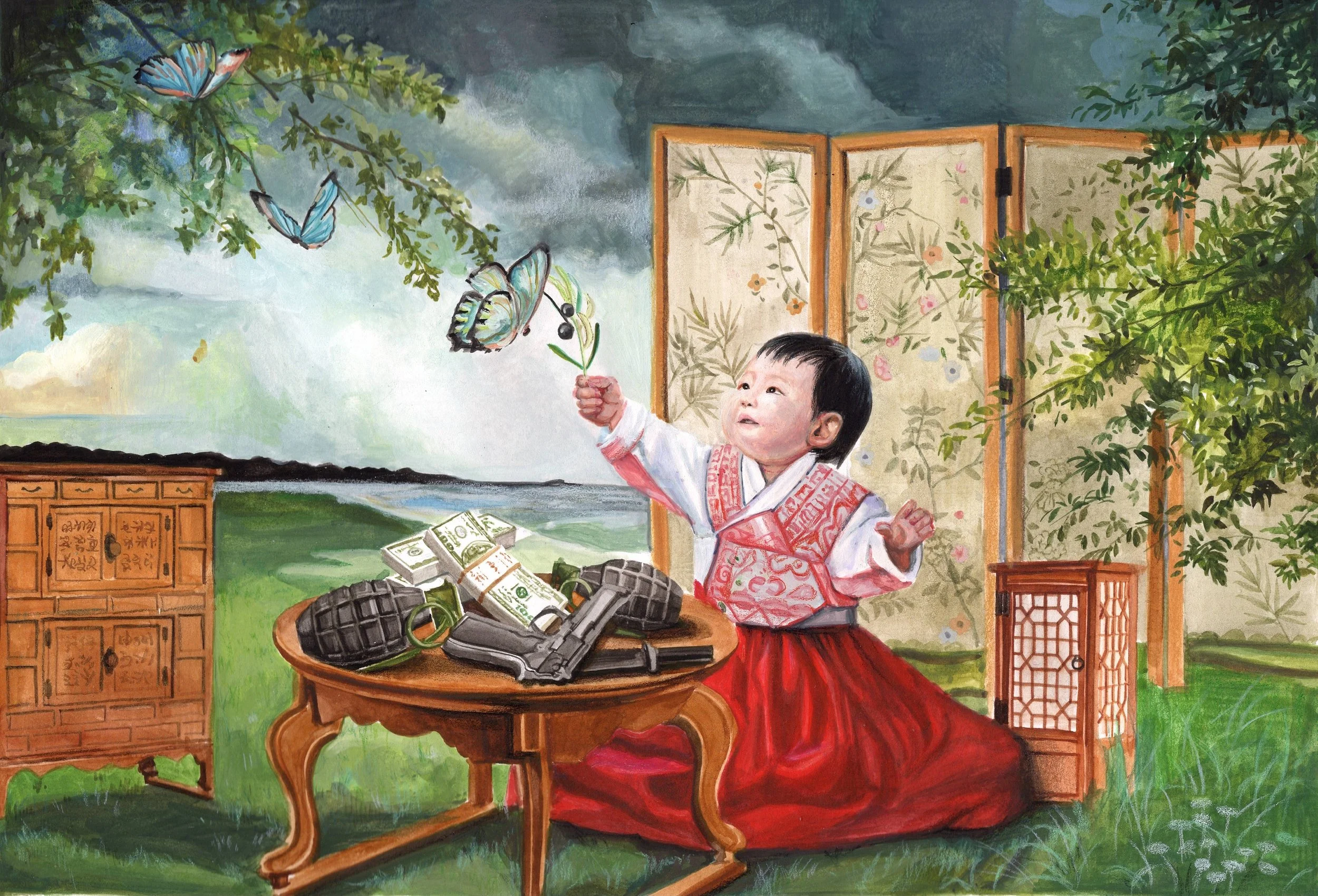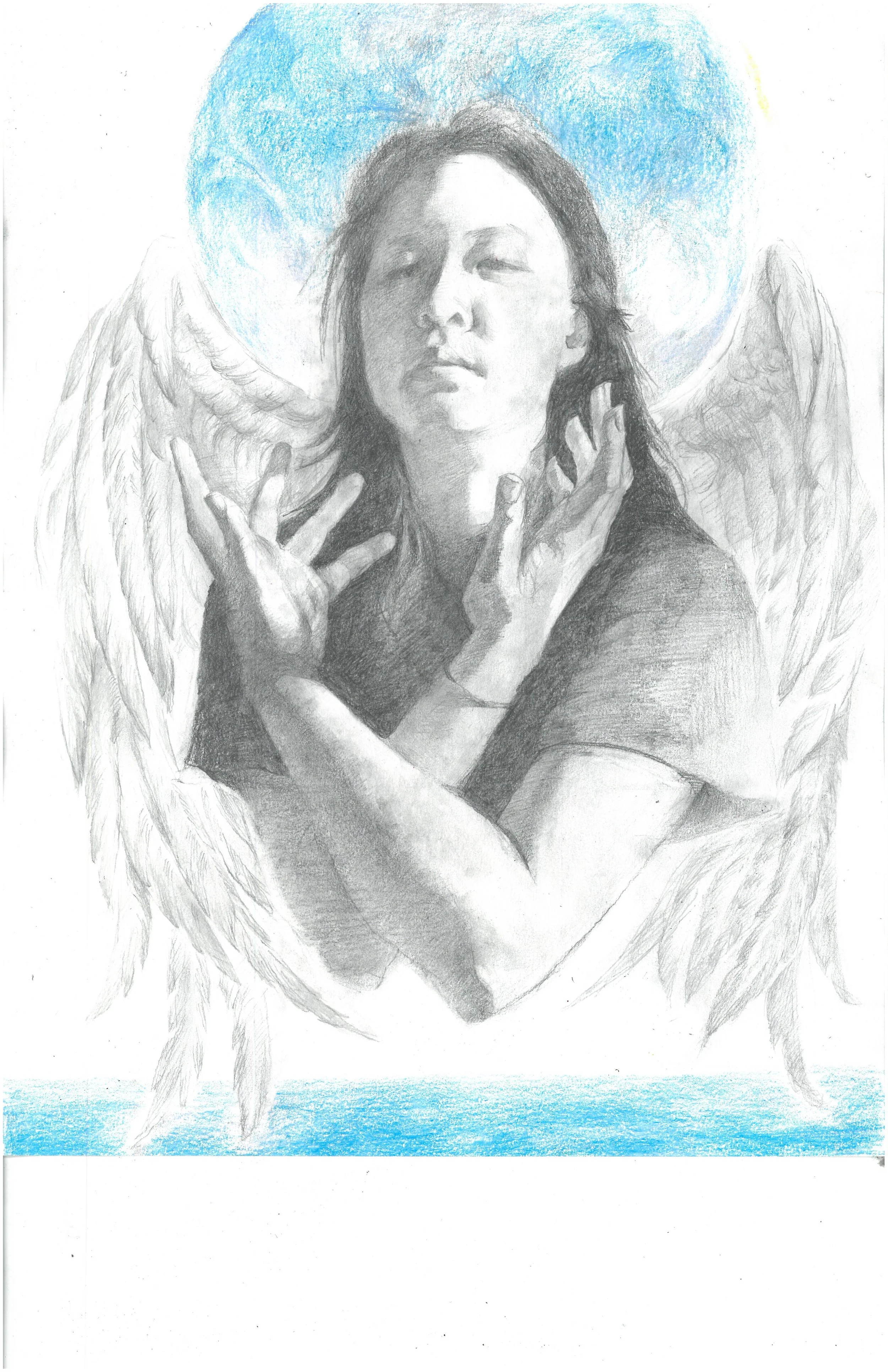THE GLOW IN THE SEALED WALL
by Leanor, 11-14, Portugal
I drew and used collages
In Portuguese :
O princípio desta obra reside no seu fulgor subentendido, presente nas entrelinhas da apatia e da vigarice. Ao longo da composição, é possível observar a perspectiva da figura superior. Ela é o sistema, uma ordem superior que tende a reprimir a inovação. Este oprime, de forma discreta, a tentativa da reforma do pensar. Coloquei, sobre a quebra da suposta paz, uma flor. Aos olhos do indivíduo que suprime, está será eternamente a flor mais formosa que já vira, todavia, à pessoa inferior,
In English:
The principle of this work lies in its implied brilliance, present between the lines of apathy and deceit. Throughout the composition, it is possible to observe the perspective of the superior figure. It is the system, a superior order that tends to repress innovation. This oppresses, discreetly, the attempt to reform thinking. I placed, over the break in the supposed peace, a flower. In the eyes of the individual who suppresses it, this will forever be the most beautiful flower he has ever seen, however, to the inferior person,
